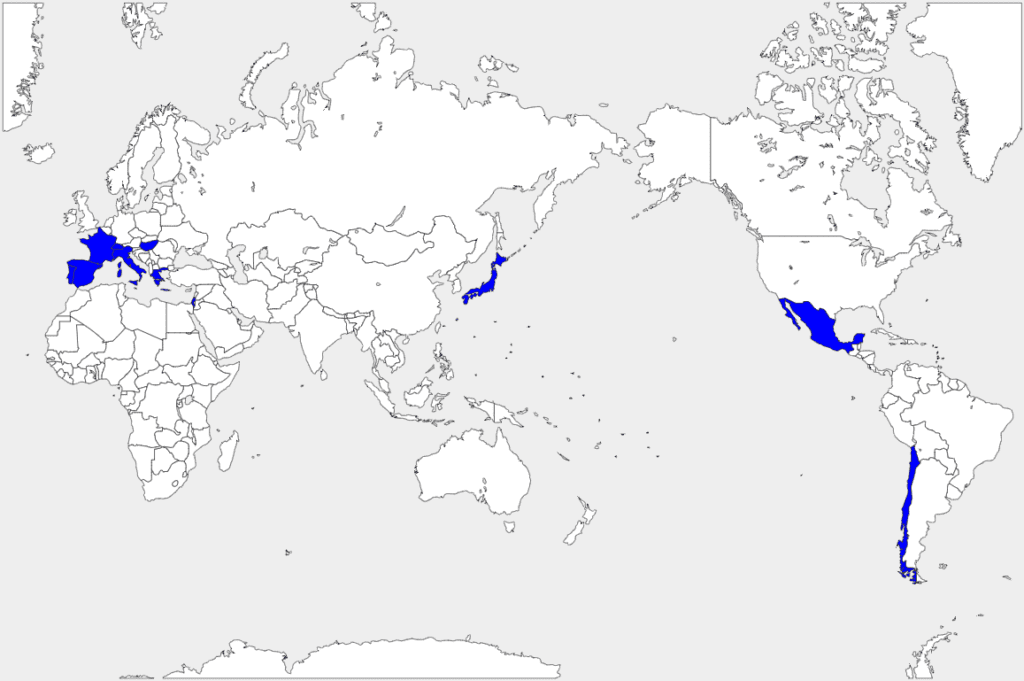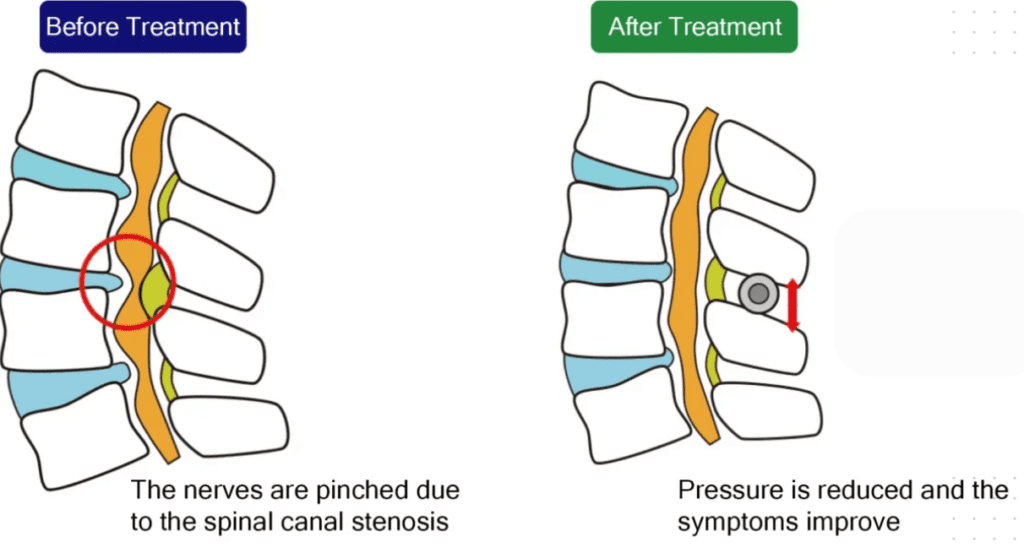Column The Florence Method: Introducing Our Innovative One-Day Treatment Method for Spinal Canal Stenosis
April 06, 2024
We have recently introduced a new treatment called the Florence method at our clinics, and we would like to explain this method to you in detail today.
What is the Florence method?
The Florence method is an advanced treatment for stenosis that uses a spacer called a Lobster to widen the narrowed spinal canal of the patient, and which was developed by the Italian company Diametros Medical in 2015.
The Lobster spacer is inserted inside the vertebral body to stabilize it and maintain the spine rotation and flexion, widen the spinal canal, and reduce the protrusion of the intervertebral disc and thickening of the Ligamentum Flavum. The widening of the narrowed canal contributes to eliminate symptoms such as pain and numbness.
Information pertaining to safety
Lobster spacers have obtained the CE Marking.
The CE Marking is a certification by the medical device manufacturer to ensure that the product meets all relevant European Medical Device Regulation (MDR), General Requirements for Safety and Performance (GSPR), and it is a legal requirement to release a device on the European Union market.
It is compliant with the European Medical Device Regulation (MDR). The European Medical Device Regulation (EU) 2017/745 is in charge of establishing requirements for medical devices in the EU.
In Japan, even if this medical device is unapproved as of now, and has yet to receive approval under the Pharmaceuticals and Medical Devices Act, it has been legally authorized for importation through “personal importation by a doctor or other person”.
X-STOP is an approved medical device in Japan that has been discontinued by its manufacturer (Medtronic) since 2015. (*1 )
(*1 ):Medical Coverage Policy No.0448. Interspinous Process Spacer Devices. 2023.
Countries Where the Florence method is used
So far, the Florence method has been introduced mainly on the European market, Israel and Japan for the Asia, and Mexico and Chile for the American continent.

The qualities of the Florence Method
The Florence method is a minimally invasive treatment with minimal risk. Unlike conventional surgical procedures, it does not remove any bones and does not damage ligaments or other structures, leaving them intact, so it is a much less physically taxing procedure for the patient.
In addition, the Florence Method is performed under local anesthesia and sedation, making it an option for patients who cannot undergo surgery performed under general anesthesia to undergo the procedure.
The treatment time is short, about 30 minutes per site, and patients can go home on the same day after resting for about 2 hours after the treatment, so that no hospitalization is required.
Indications and contraindications for the Florence method
Indicated conditions
The Florence method is indicated for patients if the following symptoms have been present for at least 6 months:
☑ Pain in the legs or buttocks
☑ Inguinal pain
☑ Pain in the lower back
☑ Intermittent claudication
It is indicated for spinal canal stenosis, mild degenerative spondylolisthesis (up to grade 1), and intervertebral arthritis.
The decision as to whether the treatment is indicated for the patient is reached after examining the patient’s MRI and X-ray, as well as performing a consultation.
Conditions for which the treatment is not indicated
If the cause of spinal canal stenosis is largely due to the intervertebral discs or bones, the Florence Method is unlikely to be effective and may not be applicable in some cases. Also, in the case of osteoporosis (especially in severe cases), it is not applicable due to the risk of fracture.
It is contraindicated for patients with known allergies to the spacer components or anesthetics, patients with severe obesity, depression, or other conditions that make it difficult to interpret pain objectively.
It is also not indicated for patients who are pregnant.
The Florence Method of Treatment
First, an incision of 1 to 2 cm is made in the back under local anesthesia under fluoroscopy, and a special metal tube is placed between the spinous processes of the lumbar vertebra that is to be treated, before the spacer is inserted. The treatment takes about 30 minutes per site.
The blades of the spacer are then opened and widen the narrowed spinal canal.
Scars are minimal, and the patient can return home on the same day of treatment after resting for a couple of hours.

Effects of the Florence Method
With spinal canal stenosis, degenerated discs and ligaments put pressure on the nerves, causing symptoms of pain and numbness.
By inserting a spacer with the Florence treatment, the pressure on the nerve is eliminated and symptoms such as pain and numbness are improved.

Post-treatment precautions
Daily activities are possible from the next day onward, but sports and heavy work should be postponed for approximatively one month.
There is a minimal possibility of allergic reaction to the local anesthetic.
Theoretically, there is also a small possibility of damage to the surrounding tissues such as the nerves and the dura mater consecutive to the insertion of the spacer, but this has never been reported so far in any of our own case studies or in any published literature.
Inadequate spinal canal enlargement may result in residual symptoms such as intermittent claudication.
If you have been diagnosed with spinal canal stenosis or spondylolisthesis and are suffering from back pain, please consider taking a consultation at our clinic.



